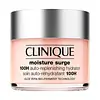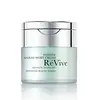What's inside
What's inside
 Key Ingredients
Key Ingredients

 Benefits
Benefits

 Concerns
Concerns

No concerns
 Ingredients Side-by-side
Ingredients Side-by-side

Water
Skin ConditioningDimethicone
EmollientButylene Glycol
HumectantGlycerin
HumectantTrisiloxane
Skin ConditioningTrehalose
HumectantSucrose
HumectantAmmonium Acryloyldimethyltaurate/Vp Copolymer
Hydroxyethyl Urea
HumectantCamellia Sinensis Leaf Extract
AntimicrobialSilybum Marianum Extract
Skin ConditioningBetula Alba Bark Extract
MaskingSaccharomyces Lysate Extract
HumectantAloe Barbadensis Leaf Water
MaskingAloe Barbadensis Leaf Extract
EmollientThermus Thermophillus Ferment
Skin ConditioningCaffeine
Skin ConditioningSorbitol
HumectantPalmitoyl Hexapeptide-12
Skin ConditioningSodium Hyaluronate
HumectantCaprylyl Glycol
EmollientOleth-10
EmulsifyingSodium Polyaspartate
HumectantAloe Barbadensis Leaf Polysaccharides
EmollientLactobacillus Ferment Lysate
Skin ConditioningSaccharide Isomerate
HumectantHydrogenated Lecithin
EmulsifyingTocopheryl Acetate
AntioxidantAcrylates/C10-30 Alkyl Acrylate Crosspolymer
Emulsion StabilisingGlyceryl Polymethacrylate
Tromethamine
BufferingPEG-8
HumectantHexylene Glycol
EmulsifyingMagnesium Ascorbyl Phosphate
AntioxidantCitric Acid
BufferingBHT
AntioxidantDisodium EDTA
Sodium Citrate
BufferingPotassium Sorbate
PreservativeSodium Benzoate
MaskingPhenoxyethanol
PreservativeCI 14700
Cosmetic ColorantCI 19140
Cosmetic ColorantWater, Dimethicone, Butylene Glycol, Glycerin, Trisiloxane, Trehalose, Sucrose, Ammonium Acryloyldimethyltaurate/Vp Copolymer, Hydroxyethyl Urea, Camellia Sinensis Leaf Extract, Silybum Marianum Extract, Betula Alba Bark Extract, Saccharomyces Lysate Extract, Aloe Barbadensis Leaf Water, Aloe Barbadensis Leaf Extract, Thermus Thermophillus Ferment, Caffeine, Sorbitol, Palmitoyl Hexapeptide-12, Sodium Hyaluronate, Caprylyl Glycol, Oleth-10, Sodium Polyaspartate, Aloe Barbadensis Leaf Polysaccharides, Lactobacillus Ferment Lysate, Saccharide Isomerate, Hydrogenated Lecithin, Tocopheryl Acetate, Acrylates/C10-30 Alkyl Acrylate Crosspolymer, Glyceryl Polymethacrylate, Tromethamine, PEG-8, Hexylene Glycol, Magnesium Ascorbyl Phosphate, Citric Acid, BHT, Disodium EDTA, Sodium Citrate, Potassium Sorbate, Sodium Benzoate, Phenoxyethanol, CI 14700, CI 19140
Water
Skin ConditioningPropanediol
SolventGlycerin
HumectantDimethicone
EmollientPhytosteryl/Isostearyl/Cetyl/Stearyl/Behenyl Dimer Dilinoleate
Skin ConditioningTridecyl Trimellitate
EmollientNiacinamide
SmoothingCaprylic/Capric Triglyceride
Masking1,2-Hexanediol
Skin ConditioningOligopeptide-24
Skin ConditioningBisabolol
MaskingTocopherol
AntioxidantSqualane
EmollientCaffeine
Skin ConditioningSelaginella Lepidophylla Extract
EmollientJasminum Sambac Leaf Cell Extract
MaskingPolymnia Sonchifolia Root Juice
Skin ConditioningTamarindus Indica Seed Gum
Emulsion StabilisingWithania Somnifera Root Extract
Skin ConditioningAlpha-Glucan Oligosaccharide
CleansingCurcuma Longa Root Extract
MaskingPoria Cocos Extract
Skin ConditioningPhragmites Communis Extract
Skin ConditioningCucumis Sativus Fruit Extract
EmollientCamellia Sinensis Leaf Extract
AntimicrobialAgastache Mexicana Flower/Leaf/Stem Extract
Skin ConditioningMelia Azadirachta Leaf Extract
Skin ConditioningMelia Azadirachta Flower Extract
Skin ConditioningCoccinia Indica Fruit Extract
Skin ConditioningSolanum Melongena Fruit Extract
Skin ConditioningCorallina Officinalis Extract
Skin ConditioningOcimum Sanctum Leaf Extract
Skin ConditioningGlycyrrhiza Glabra Root Extract
BleachingAloe Barbadensis Leaf Juice
Skin ConditioningAloe Barbadensis Flower Extract
EmollientSodium Oleate
CleansingGlycine Soja Oil
EmollientCitrus Aurantium Dulcis Peel Oil
MaskingHydrogenated Lecithin
EmulsifyingDiisostearyl Malate
EmollientHydroxyacetophenone
AntioxidantPolysorbate 60
EmulsifyingSodium Phytate
Maltodextrin
AbsorbentIsostearyl Alcohol
EmollientSodium Citrate
BufferingBis-Diglyceryl Polyacyladipate-1
EmollientSodium Acrylate/Acryloyldimethyltaurate/Dimethylacrylamide Crosspolymer
Emulsion StabilisingFructose
HumectantIsohexadecane
EmollientAcrylates/C10-30 Alkyl Acrylate Crosspolymer
Emulsion StabilisingPentylene Glycol
Skin ConditioningSorbitan Isostearate
EmulsifyingLactobacillus Ferment
Skin ConditioningLactobacillus
Skin ConditioningMalic Acid
BufferingSodium Benzoate
MaskingPhenoxyethanol
PreservativeDisodium EDTA
Citric Acid
BufferingLimonene
PerfumingPotassium Hydroxide
BufferingWater, Propanediol, Glycerin, Dimethicone, Phytosteryl/Isostearyl/Cetyl/Stearyl/Behenyl Dimer Dilinoleate, Tridecyl Trimellitate, Niacinamide, Caprylic/Capric Triglyceride, 1,2-Hexanediol, Oligopeptide-24, Bisabolol, Tocopherol, Squalane, Caffeine, Selaginella Lepidophylla Extract, Jasminum Sambac Leaf Cell Extract, Polymnia Sonchifolia Root Juice, Tamarindus Indica Seed Gum, Withania Somnifera Root Extract, Alpha-Glucan Oligosaccharide, Curcuma Longa Root Extract, Poria Cocos Extract, Phragmites Communis Extract, Cucumis Sativus Fruit Extract, Camellia Sinensis Leaf Extract, Agastache Mexicana Flower/Leaf/Stem Extract, Melia Azadirachta Leaf Extract, Melia Azadirachta Flower Extract, Coccinia Indica Fruit Extract, Solanum Melongena Fruit Extract, Corallina Officinalis Extract, Ocimum Sanctum Leaf Extract, Glycyrrhiza Glabra Root Extract, Aloe Barbadensis Leaf Juice, Aloe Barbadensis Flower Extract, Sodium Oleate, Glycine Soja Oil, Citrus Aurantium Dulcis Peel Oil, Hydrogenated Lecithin, Diisostearyl Malate, Hydroxyacetophenone, Polysorbate 60, Sodium Phytate, Maltodextrin, Isostearyl Alcohol, Sodium Citrate, Bis-Diglyceryl Polyacyladipate-1, Sodium Acrylate/Acryloyldimethyltaurate/Dimethylacrylamide Crosspolymer, Fructose, Isohexadecane, Acrylates/C10-30 Alkyl Acrylate Crosspolymer, Pentylene Glycol, Sorbitan Isostearate, Lactobacillus Ferment, Lactobacillus, Malic Acid, Sodium Benzoate, Phenoxyethanol, Disodium EDTA, Citric Acid, Limonene, Potassium Hydroxide
 Reviews
Reviews

Ingredients Explained
These ingredients are found in both products.
Ingredients higher up in an ingredient list are typically present in a larger amount.
Acrylates/C10-30 Alkyl Acrylate Crosspolymer is a synthetic polymer. It is used to thicken and improve the texture of products. Due to its properties, it can prevent water and oil ingredients from separating.
Caffeine is most associated with coffee, tea, and cacao. In skincare, it helps with calming inflammation and is rich in antioxidants.
While caffeine is used to treat cellulite and and dark circles, further studies are needed to prove this. It has been believed to help with these skin conditions due to its ability to dilate blood vessels and increase blood flow.
Some studies are looking into caffeine's ability to protect against UV rays.
Learn more about CaffeineCamellia Sinensis Leaf Extract is derived from the leaves of the tea plant. Black tea, green tea, and oolong tea are all harvested from this plant.
This ingredient has many skin benefits:
This ingredient contains polyphenols, a strong antioxidant. Antioxidants help fight off molecules that damage skin cells.
On top of that, the antioxidants in green tea neutralize free-radicals from the sun. This gives the skin some extra UV protection, but should not replace sunscreen.
Many components of tea have anti-inflammatory properties.
Polyphenols and L-theanine help soothe the skin and reduce irritation. The caffeine in Camellia Sinensis Leaf Extract helps calm inflamed blood vessels.
Other compounds found in tea include: Vitamin Bs, linoleic acid, magnesium, calcium, iron, and zinc.
Research has shown both drinking Camellia Sinensis Leaf Tea and applying it to the skin can help boost skin elasticity and hydration. Studies also show using tea extract may reduce sebum, or oil, production.
Learn more about Camellia Sinensis Leaf ExtractCitric Acid is an alpha hydroxy acid (AHA) naturally found in citrus fruits like oranges, lemons, and limes.
Like other AHAs, citric acid can exfoliate skin by breaking down the bonds that hold dead skin cells together. This helps reveal smoother and brighter skin underneath.
However, this exfoliating effect only happens at high concentrations (20%) which can be hard to find in cosmetic products.
Due to this, citric acid is usually included in small amounts as a pH adjuster. This helps keep products slightly more acidic and compatible with skin's natural pH.
In skincare formulas, citric acid can:
While it can provide some skin benefits, research shows lactic acid and glycolic acid are generally more effective and less irritating exfoliants.
Most citric acid used in skincare today is made by fermenting sugars (usually from molasses). This synthetic version is identical to the natural citrus form but easier to stabilize and use in formulations.
Read more about some other popular AHA's here:
Learn more about Citric AcidDimethicone is a type of synthetic silicone created from natural materials such as quartz.
What it does:
Dimethicone comes in different viscosities:
Depending on the viscosity, dimethicone has different properties.
Ingredients lists don't always show which type is used, so we recommend reaching out to the brand if you have questions about the viscosity.
This ingredient is unlikely to cause irritation because it does not get absorbed into skin. However, people with silicone allergies should be careful about using this ingredient.
Note: Dimethicone may contribute to pilling. This is because it is not oil or water soluble, so pilling may occur when layered with products. When mixed with heavy oils in a formula, the outcome is also quite greasy.
Learn more about DimethiconeDisodium EDTA plays a role in making products more stable by aiding other preservatives.
It is a chelating agent, meaning it neutralizes metal ions that may be found in a product.
Disodium EDTA is a salt of edetic acid and is found to be safe in cosmetic ingredients.
Learn more about Disodium EDTAGlycerin is already naturally found in your skin. It helps moisturize and protect your skin.
A study from 2016 found glycerin to be more effective as a humectant than AHAs and hyaluronic acid.
As a humectant, it helps the skin stay hydrated by pulling moisture to your skin. The low molecular weight of glycerin allows it to pull moisture into the deeper layers of your skin.
Hydrated skin improves your skin barrier; Your skin barrier helps protect against irritants and bacteria.
Glycerin has also been found to have antimicrobial and antiviral properties. Due to these properties, glycerin is often used in wound and burn treatments.
In cosmetics, glycerin is usually derived from plants such as soybean or palm. However, it can also be sourced from animals, such as tallow or animal fat.
This ingredient is organic, colorless, odorless, and non-toxic.
Glycerin is the name for this ingredient in American English. British English uses Glycerol/Glycerine.
Learn more about GlycerinHydrogenated Lecithin is created from the hydrogenation of lecithin (a group of phospholipids). Hydrogenation is a chemical reaction between hydrogen and another element.
This ingredient is an emollient and emulsifier. As an emollient, it helps soften skin by trapping moisture within. As an emulsifier, it prevents oil and water ingredients from separating.
Phenoxyethanol is a preservative that has germicide, antimicrobial, and aromatic properties. Studies show that phenoxyethanol can prevent microbial growth. By itself, it has a scent that is similar to that of a rose.
It's often used in formulations along with Caprylyl Glycol to preserve the shelf life of products.
Sodium Benzoate is a preservative. It's used in both cosmetic and food products to inhibit the growth of mold and bacteria. It is typically produced synthetically.
Both the US FDA and EU Health Committee have approved the use of sodium benzoate. In the US, levels of 0.1% (of the total product) are allowed.
Sodium benzoate works as a preservative by inhibiting the growth of bacteria inside of cells. It prevents the cell from fermenting a type of sugar using an enzyme called phosphofructokinase.
It is the salt of benzoic acid. Foods containing sodium benzoate include soda, salad dressings, condiments, fruit juices, wines, and snack foods.
Studies for using ascorbic acid and sodium benzoate in cosmetics are lacking, especially in skincare routines with multiple steps.
We always recommend speaking with a professional, such as a dermatologist, if you have any concerns.
Learn more about Sodium BenzoateSodium Citrate is the sodium salts of citric acid. In skincare, it is used to alter pH levels and acts as a preservative.
Its main functions are to maintain the pH of a product and neutralize metal ions.
The acidity of our skin is maintained by our glands and skin biome; normal pH level of skin is slightly acidic (~4.75-5.5).
Being slightly acidic allows our skin to create an "acid mantle". This acid mantle is a thin barrier that protects our skin from bacteria and contaminants.
Learn more about Sodium CitrateWater. It's the most common cosmetic ingredient of all. You'll usually see it at the top of ingredient lists, meaning that it makes up the largest part of the product.
So why is it so popular? Water most often acts as a solvent - this means that it helps dissolve other ingredients into the formulation.
You'll also recognize water as that liquid we all need to stay alive. If you see this, drink a glass of water. Stay hydrated!
Learn more about Water